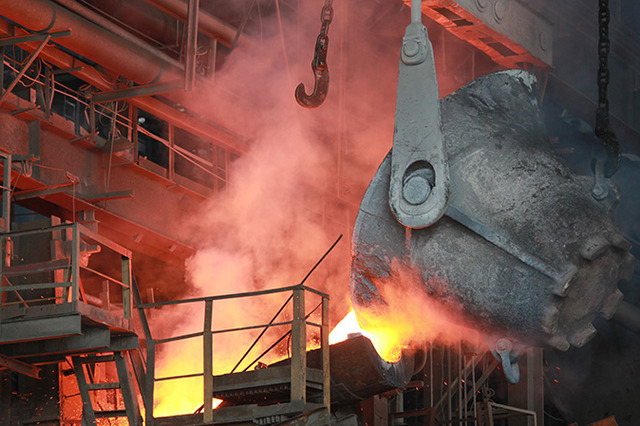Uzbekistan reveals 10% export growth fueled by gold, uranium, and copper in 1Q24
In a review of the Central Bank's monetary policy for the first quarter, Uzbekistan's export growth trajectory emerged as a prominent feature, bolstered primarily by the buoyancy of prices for gold, uranium, and copper on the global market.

During the period of January to March, the export volume witnessed a notable uptick, registering a 10% increase compared to the corresponding period last year. Notably, exports excluding gold surged by 9.6%, underscoring the robustness of Uzbekistan's export sector beyond the precious metals domain.
The surge in export growth was primarily attributed to the soaring prices of gold, uranium, and copper amid prevailing global uncertainty.
In March 2024, the Central Bank of Uzbekistan attracted attention with its significant sale of 11 tons of gold, as revealed in the latest report from the World Gold Council.
The report from the World Gold Council highlights a noticeable rise in gold sales by central banks worldwide during March, totaling 25 tons—an impressive surge of 31.7% compared to February. Uzbekistan, along with Thailand and Jordan, emerged as notable contributors to this increase, with significant sales volumes of 11 tons, 10 tons, and 4 tons, respectively.
The cost of a single gram of gold was an astonishing UZS 1,002,460 ($79.11), marking a daily rise of 0.8% in Aptil 17. For those interested in larger quantities, a five-gram bar was available for purchase at UZS 5,012,000 ($396). Since the start of the year, the price of gold has surged by an impressive 18.2%.
The increase in gold prices in 2024 can be attributed to heightened demand driven by geopolitical uncertainties, particularly in regions like the Middle East and Ukraine.
While cotton prices experienced a regression to last year's levels after a significant spike in February, lingering ambiguity regarding future price trajectories remains a key concern. Weakening global demand and diminished prices for certain commodities, particularly non-ferrous and ferrous metals, as well as machinery and transport equipment, contributed to a decline in exports by 10% and 4.5%, respectively.
Furthermore, the surge in uranium prices, attributed to the increasing prominence of nuclear energy worldwide, and the uptick in copper prices, driven by favorable trends in China's manufacturing sector, are anticipated to sustain the momentum of exports excluding gold throughout the year.
Against this backdrop, the Central Bank projects an overall export growth rate of 9-12%, with a more robust growth range of 12-14% when excluding gold. Meanwhile, import growth moderated to 3.8% in the first quarter, attributed in part to a high base established last year due to imports of vehicles, including airplanes.
Noteworthy declines in food imports by 9.5%, driven by lower global prices for meat, butter, and wheat, were observed, alongside a 3.7% reduction in chemical product imports. Despite these declines, imports of industrial goods such as petroleum products and ferrous metals remained consistently high.
Looking ahead, the Central Bank maintains its forecast for import growth at 10-12%, buoyed by ongoing reforms, expansion of production capacities, and increased supplies of energy resources, ferrous metals, and machinery and equipment to Uzbekistan.
In recent years, uranium prices on the global market have shown a consistent upward trend. For instance, between 2020 and 2021, prices remained stable at $30 per pound. However, following several fluctuations, they reached a peak in January 2024 at $105.6 per pound. Although prices experienced a gradual decline in the first quarter, they started rising again after the U.S. Senate approved a bill banning the import of nuclear fuel from Russia.
Uzbekistan's Navoiuran State Enterprise plans to increase its uranium production by 1.5 times, as revealed by Deputy Minister of Mining and Geology Jamal Fayzullaev. This information was shared during a meeting where President Shavkat Mirziyoyev was updated on the initiatives to enhance Uzbekistan’s metallurgical sectors. Previously, Deputy Minister Omonullo Nasritdinkhodzhayev had announced the country's objective of raising uranium production from 3,600 tons in 2022 to 7,000 tons by 2030.
Since 2016, Uzbekistan has consistently ranked fifth in global uranium production. In 2022, the country extracted 3,300 tons of uranium, representing 6.4% of global production. With uranium reserves exceeding 100,000 tons, Uzbekistan stands as the tenth largest holder of uranium reserves worldwide.
The Navoi Mining and Metallurgical Combine (NMMC), Uzbekistan's sole natural uranium mining company, is recognized as a global leader in the industry. NMMC predominantly exports its uranium products, constituting 99.5% of its export portfolio. Major trading partners include AREVA NC (France), Converdyn (USA), Cameco (Canada), CNEIC (China), Itochu, Marubeni (Japan), and Nukem, Inc. (USA).
Follow Daryo's official Instagram and Twitter pages to keep current on world news.
Comments (0)